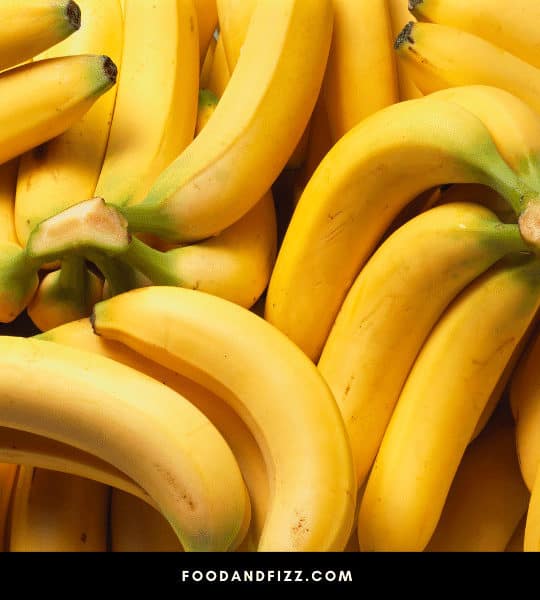Fruits and vegetables wrapped in plastic are not very appealing, and some may even argue that it kills their natural energy and vitality. We know though that this is done out of practicality, to make them easier to sort and transport, especially for produce going to the large grocery stores.
However, this sometimes extends to more than just practicality, as in the case of organic bananas.
Wandering through the fruit and vegetable aisle, you might notice that your organic bananas have plastic on their stem. What could be the reason for this?
Why do organic bananas have plastic on the stem?
Why Do Organic Bananas Have Plastic on Stem?
Organic bananas have plastic on their stems to prevent the release of ethylene gas, which is the plant hormone responsible for ripening fruits. Ethylene gas is released through the stems, and covering the stems with plastic wrap prevents this gas from releasing and ripening the bananas, allowing your organic bananas to last longer.
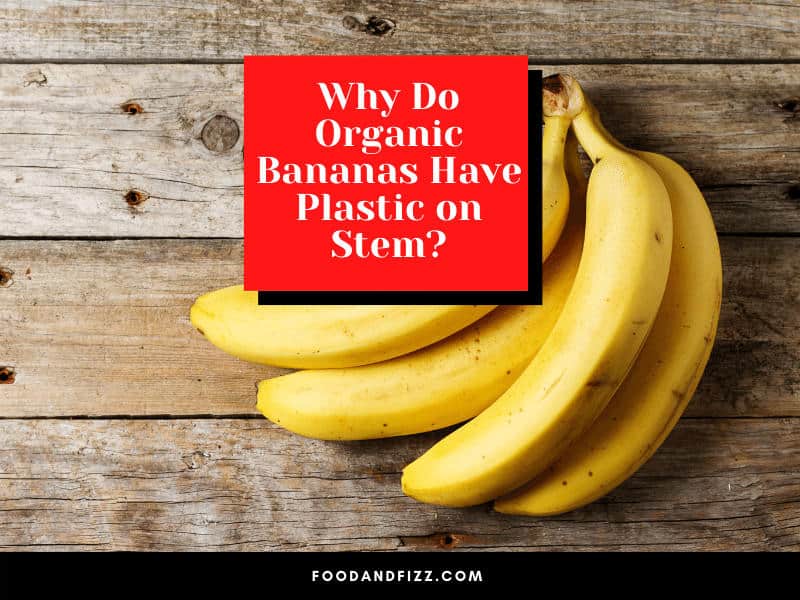
What is A Banana?
A banana is a yellow, elongated fruit that is grown in tropical regions, particularly in Asia, South America, and Africa. Technically a berry, it is botanically more closely related to cranberries and blueberries than strawberries are (strawberries are not real berries).
It is one of the most popular fruits in the world and is well-loved because of its taste, health benefits, and various culinary uses.
Some of its health benefits include:
- Rich in vitamins and minerals like Vitamin A, B, C, and Magnesium
- Full of fiber and antioxidants
- Contains Potassium, which is vital for heart health, kidney function, and blood pressure regulation
- Low in calories, provides energy and helps replenish electrolytes after a workout
Bananas are also used in cooking and baking as a substitute for eggs or fat and are delicious when baked into cakes, muffins, pancakes, and bread.
Their natural sweetness and creaminess also make them perfect in smoothies, puddings, and yes, even ice cream.
They are versatile and delicious on their own, too. A banana is a healthy, easy-to-prepare (and transport) snack as it does not require washing or special containers. Simply pick, peel and go (eat).
This is why bananas are very popular as a quick breakfast or snack, and because of their easily digestible carbohydrates, they make for the perfect pre-workout and post-workout snack. Pair them with coffee and its instant breakfast – “What Happens When I Eat Bananas with A Cup of Coffee?”.
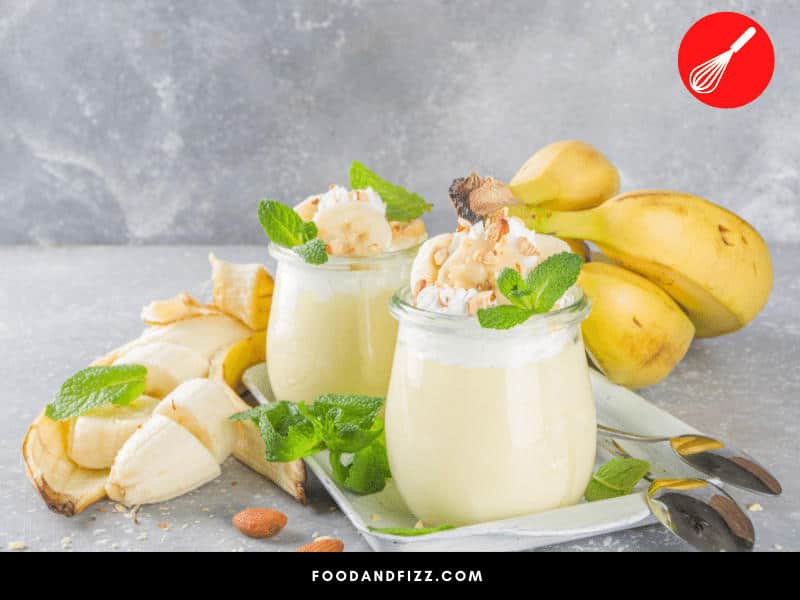
What Are Organic Bananas and How Are They Grown?
Bananas that are grown naturally, are not genetically modified, and are not exposed to human-made chemicals are known as organic bananas.
Mostly, they look similar to regular bananas, and there is no known evidence that they are nutritionally superior to regular bananas.
Organic bananas, though, as with other organic produce, may sometimes look more “imperfect” than their conventionally grown counterparts as they are not heavily sprayed with artificial chemicals that make them look more attractive.
These imperfections, though, are normal and natural and are just a result of how they were grown.
Organic Bananas vs. Conventional Bananas: Which is Better for You?
You may have heard of the “Dirty Dozen” or the list of fruits and vegetables that are conventionally grown that are found to be laden with pesticides and chemicals that pose health dangers.
Bananas are not very high on this list as compared to greens and berries, arguably because of their protective peel that berries, for example, do not have.
But it is a fact that conventional bananas are heavily sprayed with pesticides and synthetic fertilizers.
Even if you peel bananas before you consume them, these pesticides and chemicals may leach into the soil and therefore go into your bananas as they grow, too.
Organic bananas will not have this issue, as they are grown without the use of these harmful pesticides and make use only of naturally-derived ones in cultivation.
Because of this, they are arguably the better choice as they limit our exposure to chemicals that may potentially endanger our health.
Nutritionally speaking, though, organic bananas and regular bananas offer pretty much the same wonderful health benefits.
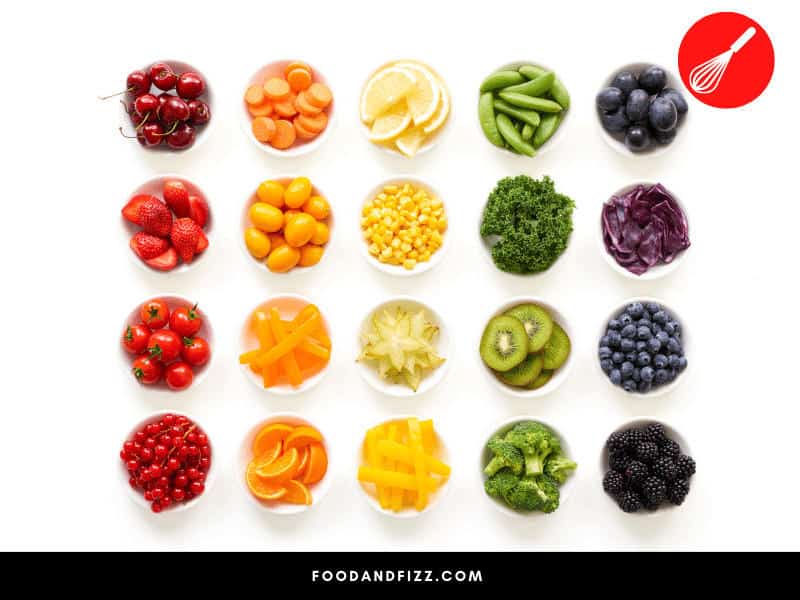
Why Do Organic Bananas Have Plastic on Stem?
Organic bananas have plastic on their stems to block the release of ethylene gas. Ethylene is a gas released by fruits to facilitate and promote their ripening.
Some fruits produce more and are more sensitive to ethylene than others, and important steps need to be taken to control this release to make the fruit last longer in storage.
Bananas are one of these fruits that produce ethylene in large amounts until they are ripe, which is released through the stems.
Covering the stems in plastic wrap slows down the release of this gas and slows down the ripening of the bananas, thus prolonging their lifespan.
Climacteric and Non-Climacteric Fruits
Fruit is generally grouped into two categories: ones that can ripen after harvest and those that cannot ripen after harvest.
Climacteric fruits
This group of fruits can ripen after they are harvested and produce big amounts of ethylene gas once picked to facilitate fruit ripening. Examples are bananas, apples, and avocados.
It means that it is generally okay to buy these fruits underripe or slightly green, as these fruits can continue to sweeten and ripen at room temperature until we are ready to consume them.
However, once the natural production of ethylene gas starts in the fruit, they achieve ripeness faster and also spoil faster unless measures are taken to regulate them.
Commercially picked climacteric fruits are normally harvested underripe, and factoring in the time and conditions for transport to grocery stores, several measures are taken to ensure proper timing and ripeness.
Bananas are commercially treated with synthetic ethylene gas in controlled conditions to facilitate uniform color and controlled ripening so that they ripen at just the right time when they reach the stores.
Organic bananas are not sprayed with this synthetic ethylene gas and rely on the naturally-produced ethylene gas for ripening, which is why they are wrapped in plastic at the stems to make them last longer in transport and storage.
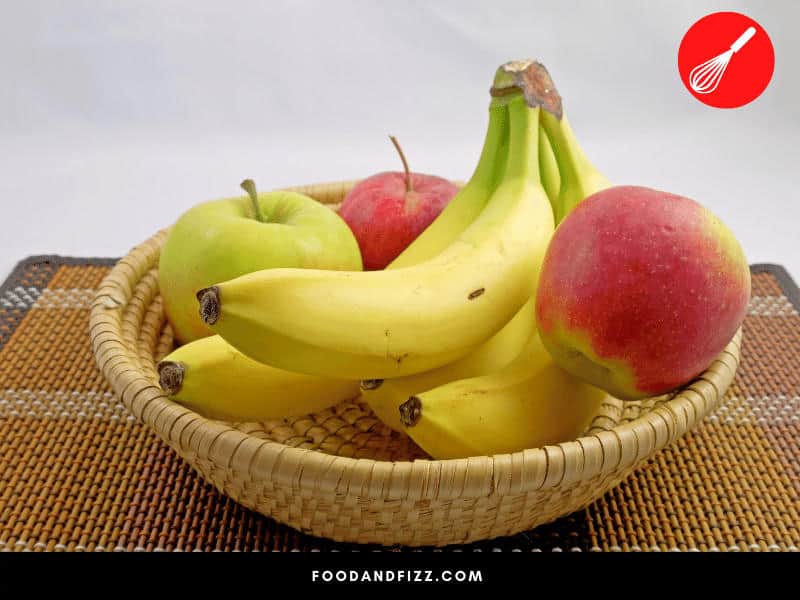
Non-climacteric Fruits
Fruits in this category will not ripen or develop more sweetness once they are picked. They need to be on the tree or on the vine to keep ripening and cannot do that on their own once picked.
Often, their peak quality is at harvest. Examples include strawberries, lemons, oranges, and raspberries.
Climacteric fruits, besides producing ethylene gas themselves, are sensitive to exposure from other fruits too.
This is the reason why you can often ripen your fruits faster by putting them next to other fruit, and also why, a rotten apple can cause all other fruits in the basket to rot faster, too.
How to Store Organic Bananas So That They Last Longer
Now that we know that bananas are climacteric and produce a lot of ethylene gas, how do we make them last longer, especially if we got organic bananas?
Below are some tips.
1. When purchasing your bananas, go for one that’s slightly green and underripe.
Unless you’re making banana bread right now and need overripe bananas, make sure to choose bananas that are still slightly firm or those that have a tinge of green when you purchase them at the store or local fruit stand.
They will continue to ripen on your counter, and picking one that’s not completely ripe yet will allow you to store them on your counter and enjoy them for longer than already ripe ones.
However, if you do need soft and ripened bananas urgently and the store does not have them, you can easily age your bananas for use in bread: “How To Age Bananas for Banana Bread – The 4 Best Methods“.
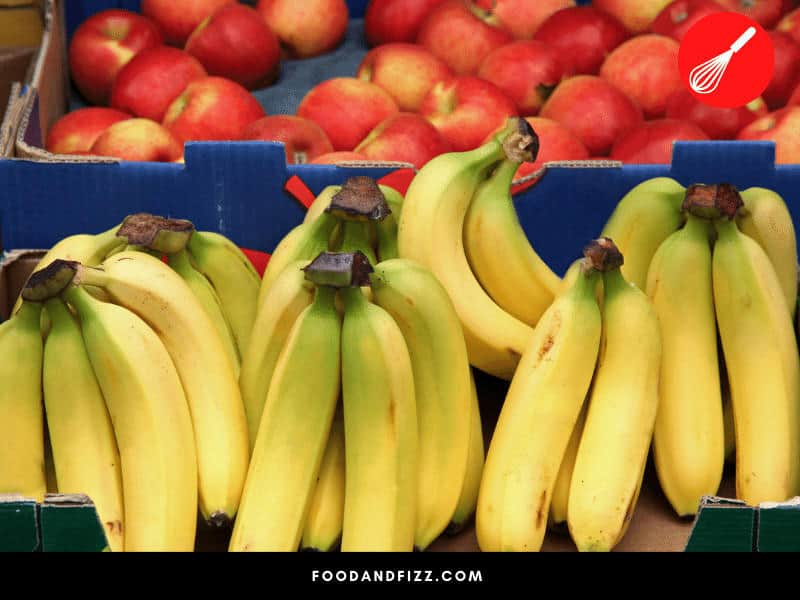
2. Remove them from their packaging once you get home
Like all of us, bananas need space and room to breathe. Once you get home, make sure to remove them from the paper bag or plastic bag that they came in.
Not doing so will trap and concentrate the ethylene gas in the package and cause them to ripen and rot faster.
3. Keep the stems wrapped in plastic wrap or foil
Keeping the stems wrapped will prevent ethylene gas from releasing and absorbing into the fruit, slowing down their ripening and giving you more days to enjoy your ripe bananas.
If you want to go a step further and so that they last even longer, you can separate your bananas into individual pieces and wrap the stems individually. This further hampers the ripening mechanism of ethylene gas.
4. Make sure that they keep their distance from other ripe fruits
Putting your bananas next to a ripe apple, whether this is in the fridge or at room temperature, will cause both of them to ripen faster and rot a lot faster because the ethylene will be more concentrated between the two ripe fruits.
5. Refrigerate or Freeze Your Bananas
If you want your bananas to last even longer, you can opt to refrigerate or freeze them. Refrigerating may cause the banana skin to darken, but it will slow down the ripening process and allow you to enjoy your bananas for longer.
It is important to know the difference, though, between bananas that have turned brown due to oxidation or chemical reactions, or if it has simply gone bad. Read “How To Tell if A Banana is Bad? 4 Things to Consider” to know more.
Another option you can take is to freeze your bananas. Simply peel them and cut into slices or chunks, store them in a freezer bag, and place them in the freezer. You can then easily throw them into your breakfast smoothies or easily make one-ingredient ice cream.
Conclusion To Why Do Organic Bananas Have Plastic on Stem
Bananas are amazing fruit and are always great to add to a healthy, varied diet. Because of the many things we can do with them and their versatility and convenience as a quick snack, it is understandable that we want to make them last longer in storage.
Whether you choose to buy organic bananas or conventionally-grown bananas, there are many ways you can do to make them last longer on your counter.
From choosing underripe bananas at the store to wrapping the stems and allowing them to breathe and be away from other ripe fruits to refrigerating and freezing, there are many options we can take to ensure that we’ll always have these healthy fruits available at our homes.
Frequently Asked Questions to Why Do Organic Bananas Have Plastic on Stem
Can I Use Foil to Cover Banana Stems Instead of Plastic Wrap?
You can use foil to cover your banana stems instead of plastic wrap. As long as you cover them properly, they should minimize the release of ethylene gas and allow your bananas to last longer.
Are Organic Bananas Healthier Than Regular Bananas?
Nutritionally, there is no clear evidence that organic bananas are superior to conventionally grown bananas. However, organic bananas are grown naturally and do not use harmful pesticides and chemicals unlike conventionally-grown bananas, which are sprayed with pesticides and fungicides that have many potential health risks.

